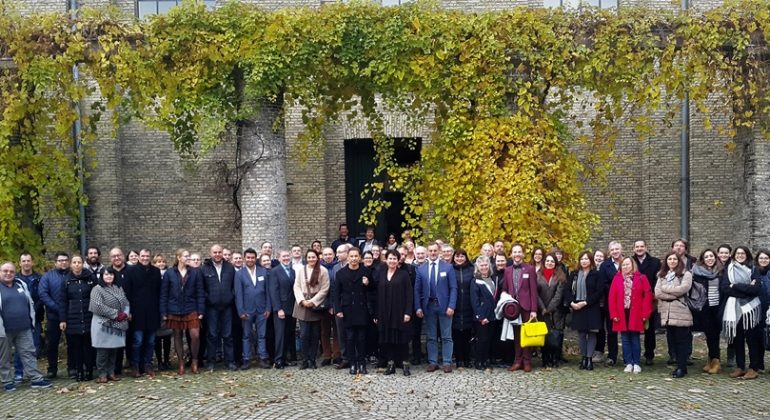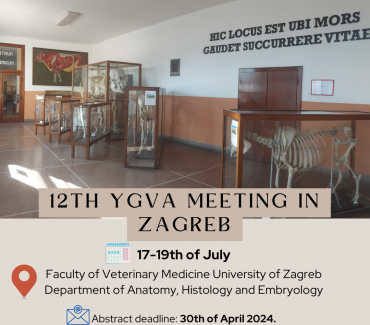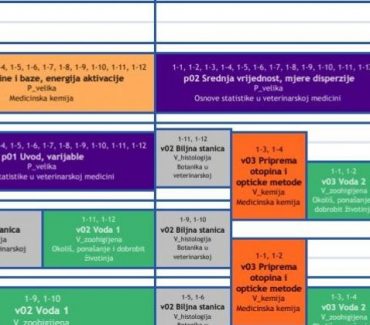
More than 150 meat safety experts across EU together to improve meat inspection
The role of meat safety is to provide safe and wholesome meat for human consumption. Numerous control measures and tools are employed in the whole food chain to produce safe meat and one of them is meat inspection that represents supervision of animals and meat, mainly by official veterinarians. Despite the efforts taken, the EU is still witnessing meat scandals occasionally. Moreover, the hazards causing disease in humans, such as Salmonella or Campylobacter, cannot necessarily be seen at meat inspection. Consequently, meat or meat products may already have been sold and consumed, before the source of contamination is identified. Therefore, the current criteria of meat inspection are under revision in the light of the knowledge of food science.
The new EU COST action “Risk-based meat inspection and integrated meat safety assurance” (RIBMINS) has gathered more than 150 experts in the field, even outside of the EU, keen to put the accent on improving meat inspection in the next four years. To do this, food safety professionals are analysing the way in which meat inspection could be made more efficient and cost effective for governments and industries, but also for the benefit of the consumers. This could be in the form of development of meat safety assurance systems. This EU COST action is much in line with the European Food Safety Authority’s (EFSA) proposal to work on building modern, risk-based meat safety assurance system based on risk assessment and where control measures are applied at those points in the meat chain, where there is a high cost-effectiveness in reducing meat-borne risks.
This initiative for launching the EU COST action in meat inspection came from 37-year old Associate Professor Dr Bojan Blagojevic, European specialist in veterinary public health from the University of Novi Sad (Serbia), who is now chairing the action: “More than a century-old system was for long time employed to tackle modern meat safety threats – with limited success. My idea was to gather the best experts from more than 35 countries to make the meat safety system more efficient. To tackle the main meat-borne hazards, meat inspection must be revised to be risk-based and as such to be a part of the modern, longitudinally integrated system that entails prevention and control throughout the meat chain with the main focus on farm and abattoir stages.”
The vice-chair of the action, Dr Lis Alban, is Adjunct Professor at the University of Copenhagen and Chief Scientist within the Danish Agriculture & Food Council. “Our EU COST action is in the interest of fair competition in the meat industry sector and more efficient regulatory controls across Europe. To speed up this process, we need to collaborate to find the best solutions – and only hereby will the producers and abattoirs be able to deliver safe meat to all consumers.” says Dr Alban, who organised a large conference within the EU COST action at University of Copenhagen from 6th until 8th November 2019.
The science communication manager of the EU COST action, Dr Boris Antunovic, Professor at the University of J.J. Strossmayer in Osijek in Croatia, says: “We have well established experts from different EU countries within the action. Some of them have never seen each other before and now they are able to work together in next four years and share their ideas and experiences in meat inspection. There is also an opportunity for young researchers to join the action by applying for short term scientific missions. This is very powerful tool.”
The meat industry has highly welcomed the new EU COST action RIBMINS. Francisco Requena is the Director of a 200-year old Spanish company with headquarters in Malaga, processing 25,000 pigs per week and exporting 50% of production to other EU countries and Asia. “Meat inspection is complex and, in the day-by-day operations, it brings a number of controversial problems to industries. The effect of using end-product laboratory testing as a substitute for meat inspection in detecting most relevant human health hazards is very limited – it is expensive and non-proactive while tested food samples may not be sufficiently representative due to the heterogeneous distribution of pathogens. In addition, the results may be delayed, depending on tests’ performances, and may relate only to the examined hazards. In overall, testing and negative results certainly do not guarantee the safety of meat.”, says Mr Requena.
Due to increased international trade of meat on the global level, the EU COST action has already attracted interest of experts outside the EU. Dr Mick Bosilevac, research microbiologist in the U.S. Meat Animal Research Center in Kansas (USA) sees the EU COST action in meat inspection as an excellent opportunity for food safety and meat safety experts: “We are fortunate that at least in the beef community, food safety is considered a non-competitive arena. This means problems and solutions are openly shared and addressed. The public does not respond to an outbreak or recall by avoiding beef from just the company or outlet involved. Rather they avoid all beef products. The more we can get each commodity group to work from this point of view, the faster solutions can be identified and put into place.”
New EU legislation on official controls, which is to be applied from 14th December 2019 will ensure, among other things, the application of food law and rules on animal health and welfare, and finally, revised meat inspection procedures. The COST action RIBMINS is going to be executed just in time of adjusting national control systems to this new EU legislation. For the purpose of better coordination of the activities on national levels, RIBMINS national contact points have been established for each country.
For Croatia, the role of national contact point is taken by Associate Professor Dr Nevijo Zdolec, from Faculty of Veterinary Medicine, University of Zagreb.

 Faculty of
Faculty of 



